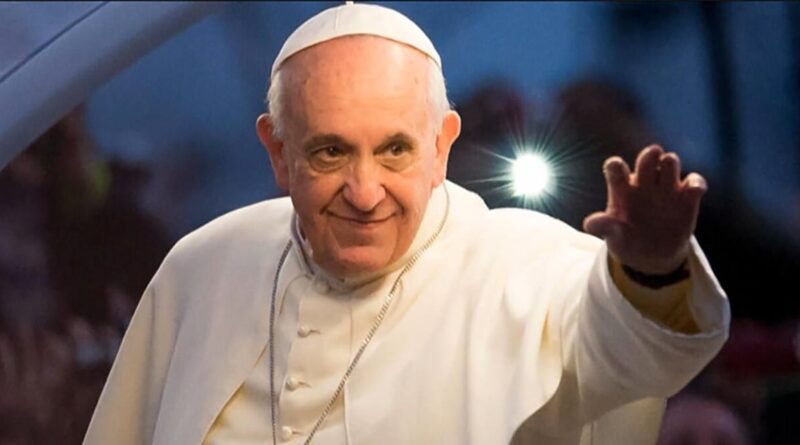Stove installed in Sistine Chapel where ballots will be burned during conclave to elect new pope
Vatican workers installed the simple stove in the Sistine Chapel where ballots will be burned during the upcoming conclave to elect a new pope, as jockeying continued outside over who among the cardinals is in the running.
The Holy See released a video Saturday of the preparations for the May 7 conclave, which included installing the stove and a false floor in the frescoed Sistine Chapel to make it even. The footage also showed workers lining up simple wooden tables where the cardinals will sit and cast their votes starting Wednesday, and a ramp leading to the main seating area for any cardinal in a wheelchair.
On Friday, fire crews were seen on the chapel roof attaching the chimney from which smoke signals will indicate whether a pope has been elected.
The preparations are all leading up to the solemn pageantry of the start of the conclave to elect a successor to Pope Francis, history’s first Latin American pope, who died April 21 at age 88. The Vatican said in a statement that Francis died of a stroke that put him into a coma and led to irreversible heart failure.
Vatican spokesman Matteo Bruni issued a net denial Friday of reports that one of the leading candidates, Cardinal Pietro Parolin, had suffered health problems earlier in the week that required medical attention. The reports, which spoke of a blood pressure issue, were carried by Italian media and picked up by Catholicvote.org, the U.S. site headed by Brian Burch, the Trump administration’s choice to be ambassador to the Holy See.
Speculation about a papal candidate’s health is a mainstay of conclave politics and maneuvering, as various factions try to torpedo or boost certain candidates. Francis experienced the dynamic firsthand: When the votes were going his way in the 2013 conclave, one breathless cardinal asked him if it was true that he had only one lung, as rumors had it. (Francis later recounted that he told the cardinal he had had the upper lobe of one lung removed as a young man.) He was elected a short time later.
Some are weighing in on other so-called “pope-fuls.” In addition to Parolin, other candidates whose names have arisen include Cardinal Luis Antonio Tagle, the former archbishop of Manila, and conservative Cardinal Robert Sarah from Guinea.
Less is known about the 15 cardinals that Francis named from countries that previously had none — or how they will vote. One of them is Anders Arborelius of Sweden.
“We live in a time of conflict, wars,” he said. “So it’s important to have a voice that can say something else, that God is present.”
Antonio Masiello/Getty Images
What is the papal conclave?
The papal conclave is the closely guarded gathering of the cardinal electors — all serving cardinals under the age of 80 — to elect the next pope.
The exact number varies, but there are currently 135 cardinal electors eligible to convene at the Vatican from around the world to choose the successor to Pope Francis. Of all the current cardinal electors, 108 were appointed by Pope Francis during his 12-year papacy. They come from 71 different countries, including 10 from the United States.
What happens in the conclave?
Under church rules, the conclave must start 15 to 20 days after a pope’s death. Pope Francis died on April 21.
Wednesday morning begins with a Mass in St. Peter’s Basilica celebrated by the dean of the College of Cardinals, Cardinal Giovanni Battista Re, after which the cardinal electors are sequestered from the rest of the world. In the afternoon, they will process into the Sistine Chapel, hear a meditation and take their oaths before casting their first ballots.
If no candidate reaches the necessary two-thirds majority on the first ballot, the papers will be burned and black smoke will indicate to the world that no pope was elected.
The cardinals will go back to their Vatican residence for the night and return to the Sistine Chapel on Thursday morning to conduct two votes in the morning, two in the afternoon, until a winner is found.
Each cardinal must swear an oath of absolute secrecy before they vote. If they disclose any information from within the conclave, they will be excommunicated by the church.
After every two rounds of voting, the ballots are burned in the stove. If no pope is chosen, the ballots are mixed with cartridges containing potassium perchlorate, anthracene — a component of coal tar — and sulfur to produce black smoke out the chimney. If there is a winner, the ballots are mixed with potassium chlorate, lactose and chloroform resin to produce the white smoke.
The white smoke came out of the chimney on the fifth ballot on March 13, 2013, and Cardinal Jorge Mario Bergoglio was introduced to the world as Pope Francis a short time later from the loggia of St. Peter’s Basilica.
The preparations are underway as the cardinals meet privately in more informal sessions to discuss the needs of the Catholic Church going forward and the type of pope who can lead it.


